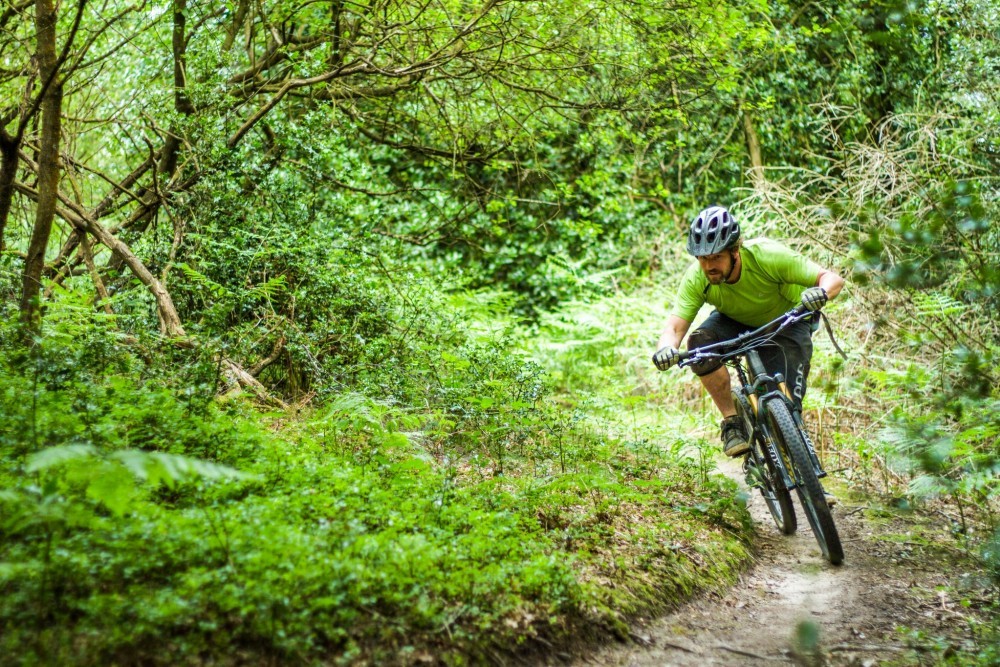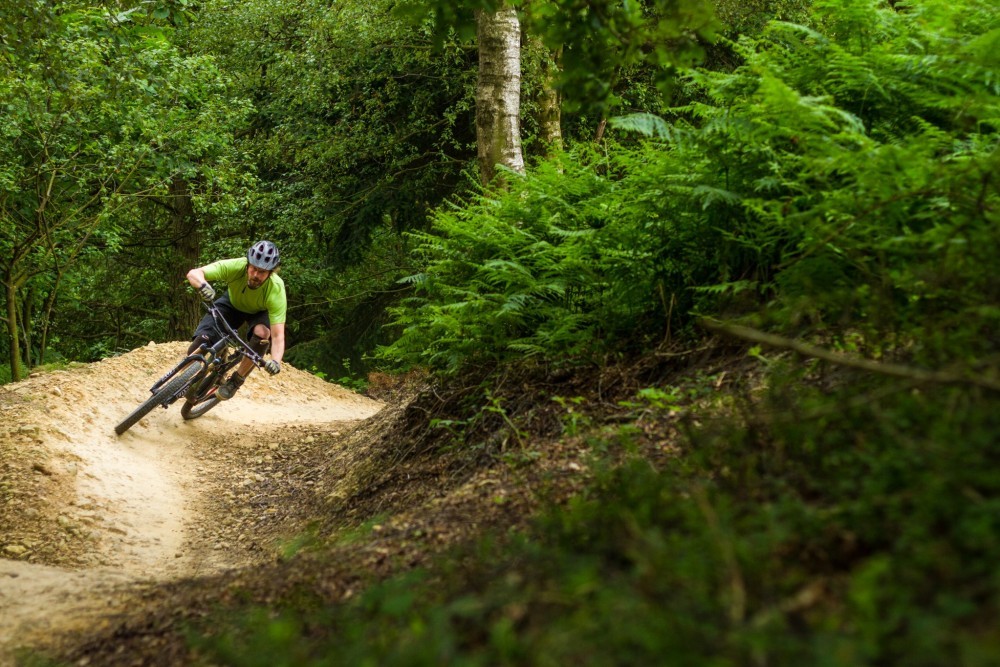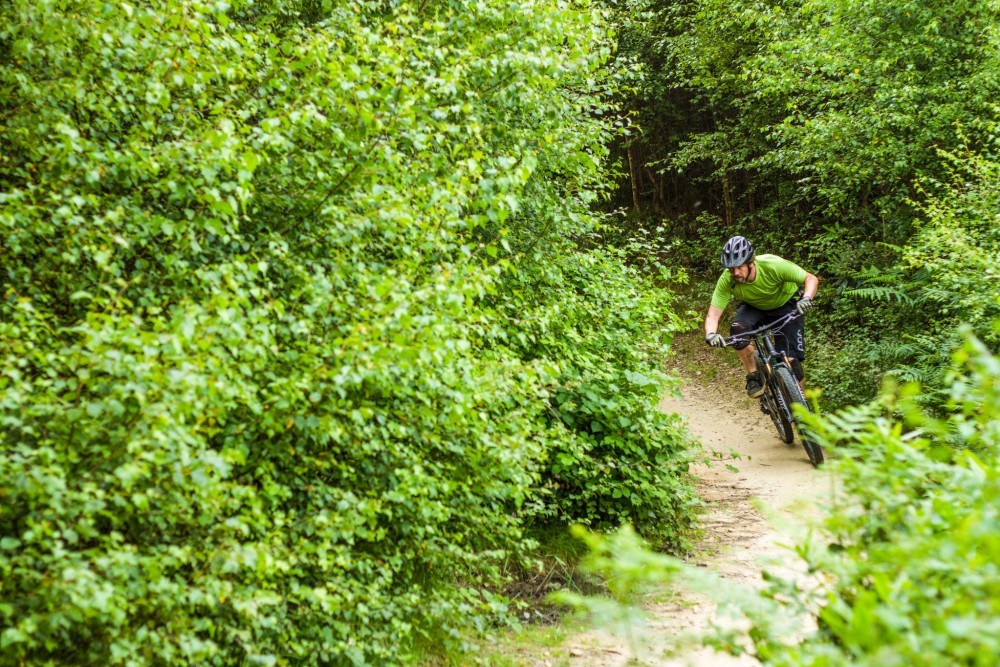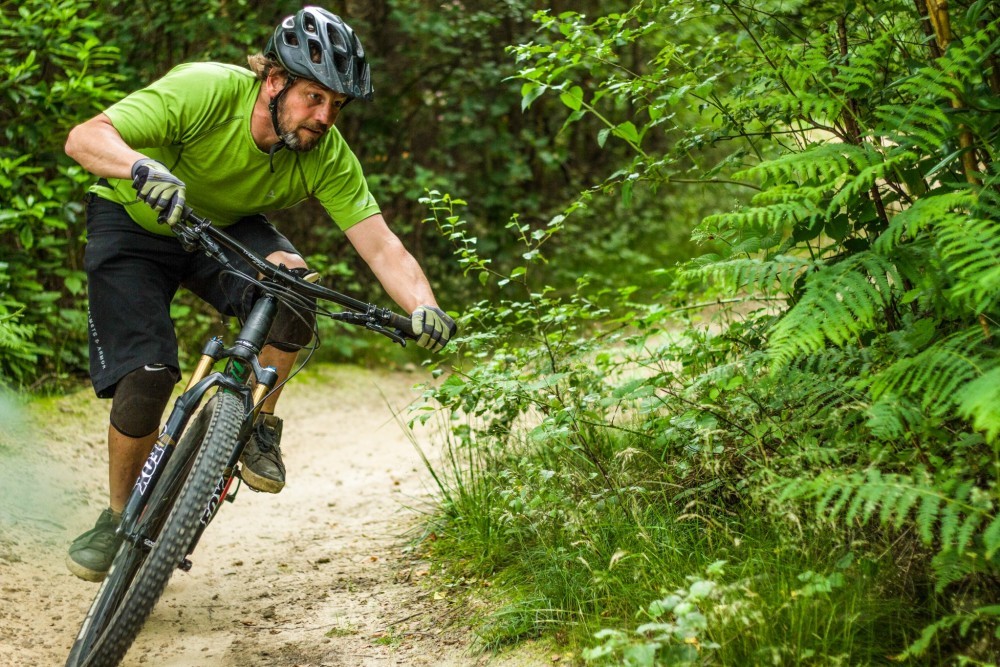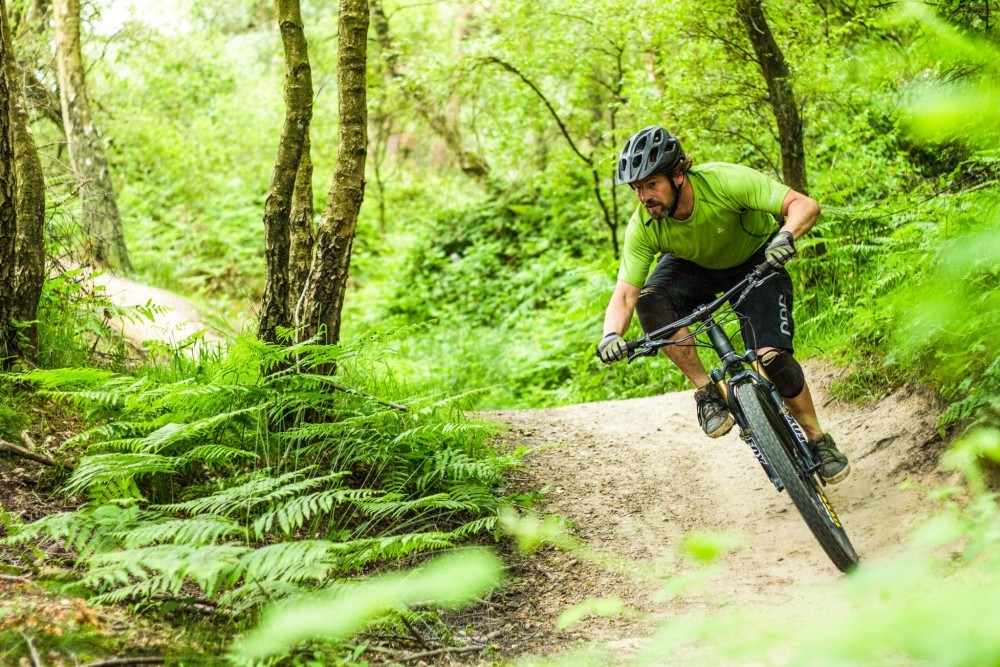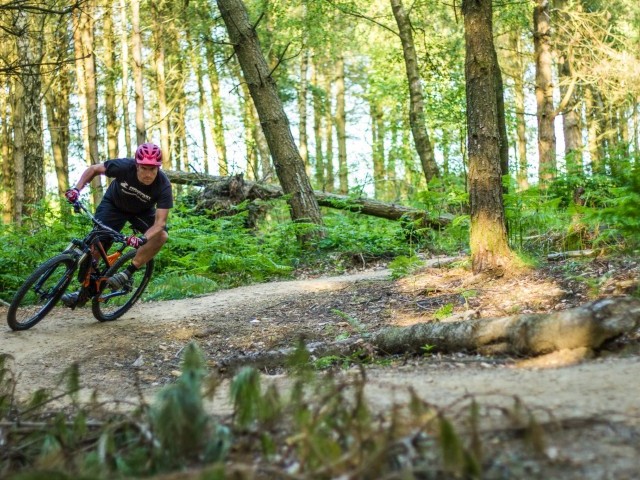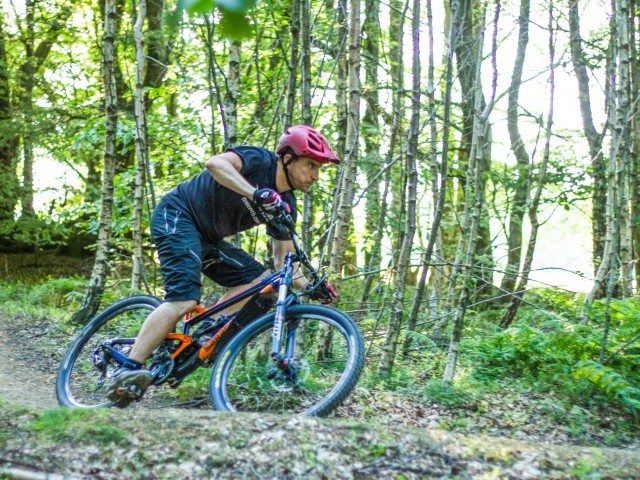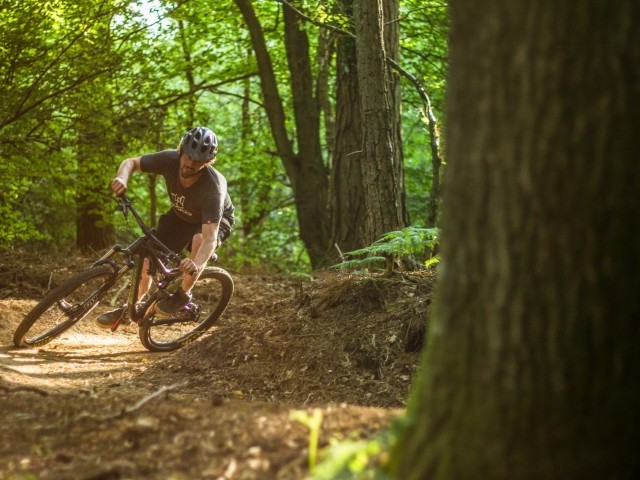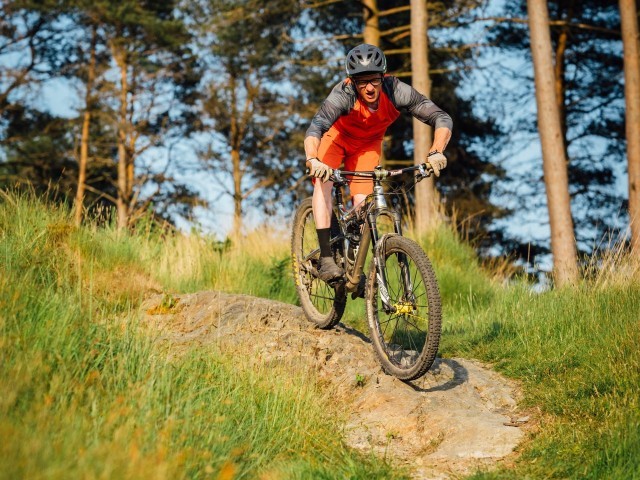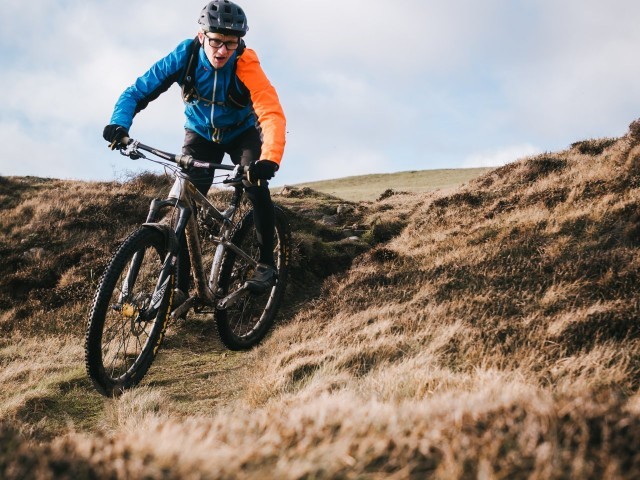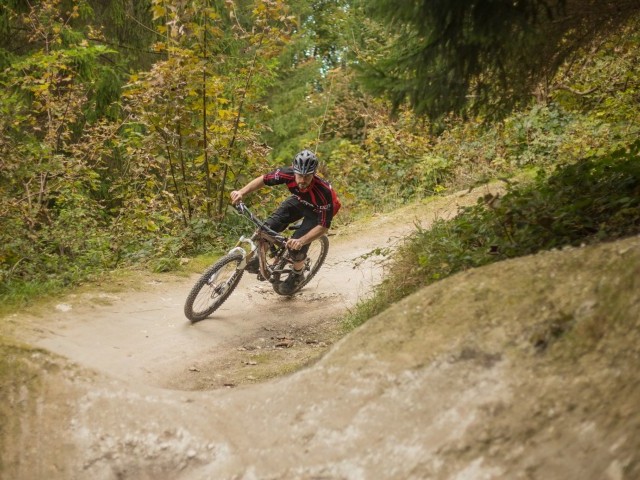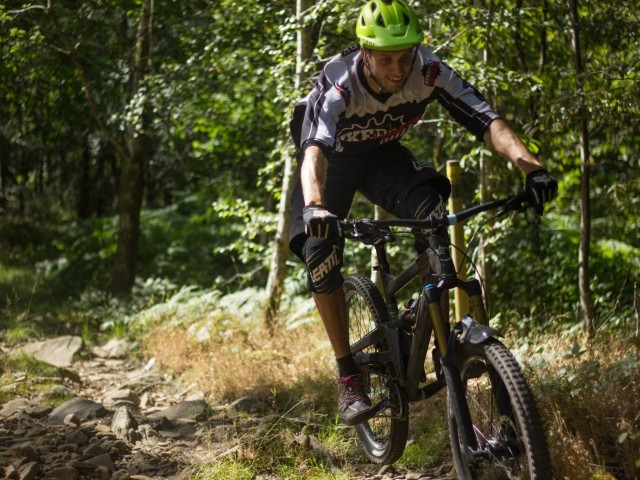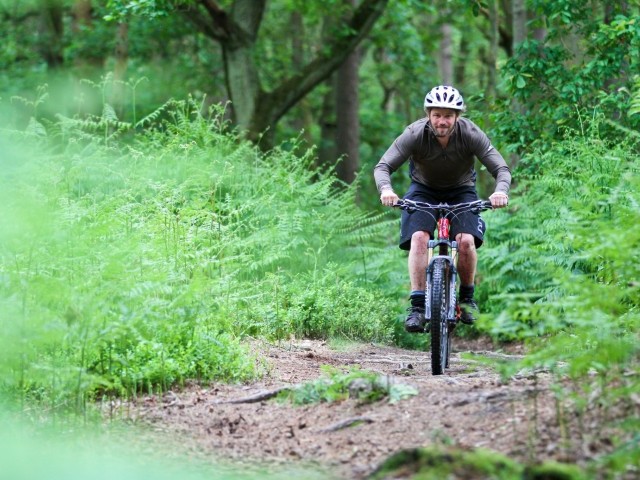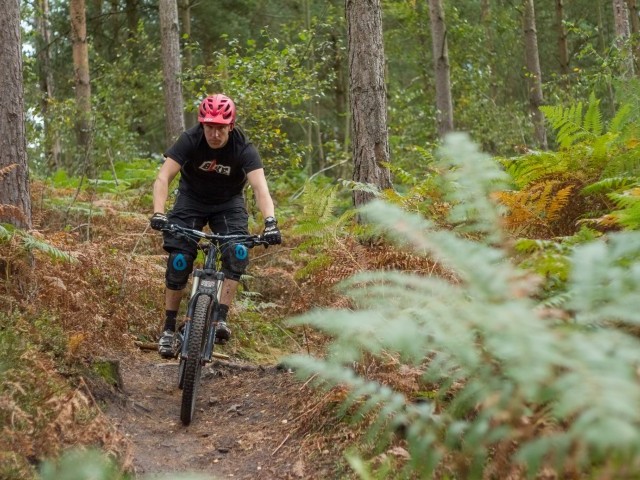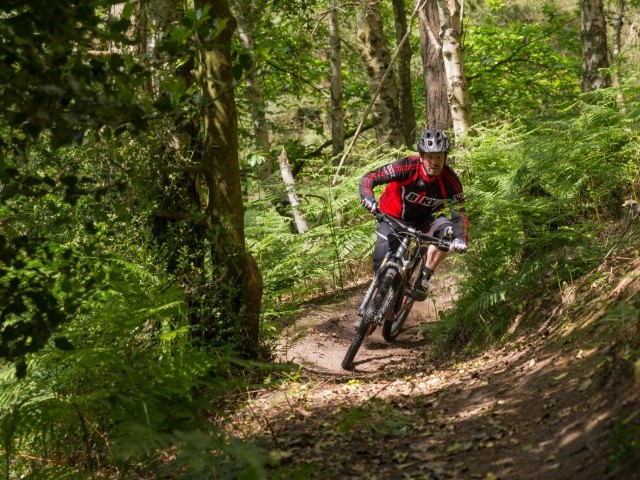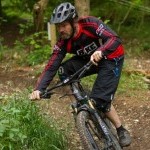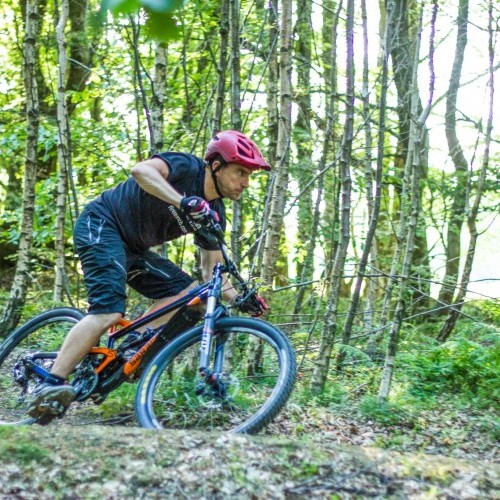
Carving Corners
Technique / Terrain
Introduction
Having looked at the fundamentals of cornering in an earlier issue it is time to add some meat to the bones and offer up some additional advice that will take you from 'getting by' to cooking on gas.
There are 5 key ingredients in our recipe for success. Those ingredients don't change from corner to corner although the ratio in which you use them might. There are easier techniques to master and it's true that some corners in some conditions by no means require you to operate at this level of technical competence. However, if you take the time to learn, practise and master this technique you will never be left short of skills, you’ll never find your wheels washing out and you’ll spend a lot less time and money seeking out the tyres that will keep you railing while those around you are failing. Obviously tyre choice and pressure do play their part in getting a grip and keeping it through corners but your equipment represents just one sixteenth of the identifiable skills elements that make up our system for decoding the DNA of riding.
In this article we look at developing best practise, combining the elements of our system and blending the five key ingredients that will take your cornering to another level.
If you feel that you have been making a dogs dinner of corners follow our recipe for success and your technique will become Michelin starred and you will be carving cordon bleu corners in no time.
The five key ingredients that combine to produce a technique that will allow you to hold the line you want and generate speed through corners can be layered in, with every ingredient adding a little more to the mix. The more that you add the better you will get and the closer to perfection you will ride.
1. Looking
We refer to this fundamental element of riding every issue and it might seem that we are stating the blatantly obvious, but to a larger degree you go where you look. If you regularly feel like you are running out of berm, or you are drifting towards the trees that line a trail, the chances are you are looking there. Visual performance cues can easily suck you in and staring at something you don't want to hit is asking for trouble. Even when not 'target fixating' looking can go wrong. It is easy to track your front wheels progress through a corner, which can have some major, negative connotations.
Firstly, looking through a corner incrementally will lead to a jerky, twitchy riding style that is essentially a series of anxious moments knitted together rather than a relaxed and fluid affair. Secondly, the closer you are looking to your front wheel the less time you have to make decisions. If you feel you are running out of time, the more likely you are to succumb to flight and fight based instinctive responses that rarely are in keeping with best practise.
Look through corners, like any other section, and you should be able to keep your commitment high and accelerate through them. Looking down at the trail mid corner can lead to an instinctive desire to steer round small trail features rather than roll on over them. If you see the tyre in the same light as the edge of a ski, cutting into the trail, you'll start to understand the inherent danger twitching at the bars creates. A little reactive tweak mid corner will lose you your edge and have the wheel slip out from under you. By looking through the section not into it you will more likely keep confidence and commitment high and find and maintain the grip you need.
2. Lean the bike
Even the dustiest of skills manuals will advise this but perhaps with little explanation as to 'why' or exactly 'how'. There is a common misconception that leaning the bike makes it turn. Strictly speaking this is not the case and if you lean your bike but stay with head, shoulders and hips pointing straight ahead it won't necessarily turn the bike.
Just as you can run a snowboard or skis on one edge without turning so you can on a bike. Although leaning the bike won't make it turn the subtle shift of your body just from looking round a corner will, if the bike is leant, start to make it turn. The more the bike leans the easier it becomes to turn and the tighter the turning circle. The trick to carving your turns is 'how' you lean the bike.
With a banked turn you can afford to lean more with the bike but for maximum grip you need to keep your weight over the tyre line. If you are in the habit of leaning the bike with your hips they drop inside this line. Often unconsciously, the rider counterbalances with the top half of the body as the hips drop inside the tyre line. Although getting some weight over the tyres this will make it very hard to twist hips through the turn correctly.
Pushing the bike over with the hand will help to encourage correct body position during the set up phase. As you tip the bike over keep your body over the tyre line by hooking your non-standing leg round the nose of the saddle. You will be able to lean the bike further and harder (both legs will end up on the same side of the saddle) and prepare to add the required level of compression and 'pump' through the corner which would be limited if you don't get free of the saddle.
If you stay above the tyre line of the bike rather than dip inside the line as you corner, your wheels are less likely to drift. Even if they do, you drift with them rather than the bike being squeezed out from under you like a bar of soap from under your foot.
3. Drop Your Outside Pedal
An area hotly debated and contested generally by those too lazy to learn, there are a number of reasons why dropping your outside pedal is a good idea...and to my knowledge only one to keep your feet level. Old school thinkers refer to dropping the outside pedal to keep the opposite pedal, on the inside of the corner, up and out of harms way as the bike leans. Although this will be a potential benefit it should be considered a happy coincidence and not much more. To anyone in any doubt as to the benefits it's worth considering a few of the genuine positives.
- By dropping the outside foot more weight will stay over and down through the tyres (even if you do get a bit 'hippy' in the set up phase).
- Dropping the outside pedal allows you to twist your hips further and more freely into the corner.
- You will generate drive through the corner effectively adding a pedal stroke as you enter the section.
- Dropping the foot forward as you enter the corner combined with pushing the bike over with the hand (rather than hips) will put a slight front wheel emphasis as you enter the corner. This will aid traction and initiate the 'pump' through the corner.
- Dropping the outside pedal as you lean the bike open's up your 'pocket' that you can sink into deeper to add greater compression (see sink and pump below).
- You can pump harder with more confidence. Level feet require you to lean more with the bike. As you pump through the corner you will be pushing across the trail surface. If the corner is banked (a berm) you might get away with this more but even in a berm the force you can pump with will be more to do with centrifugal force and thus the speed you are going. Dropping the outside pedal allows you to drop down into the bike not just push across the tyres. You can add more force even at lower speeds.
- Do you need more?
- Ok, one more. Dropping the outside foot puts the emphasis of pressure down the correct side of the bike pushing it through the corner.
Clearly there is one obvious reason why you would choose to not drop the outside pedal... it's easier not too. If you think that is reason enough to overlook the benefits of best practise, good luck to you and remember to wave at the barges on the canal! The tow path being about the level of technicality of trail you should stick to, after all, it's easier.
4. Twist and unleash the 'magic foot'
It is you that need to change direction. You drive the bike and are not simply a passenger. Just as when carving on skis driving energy from the ground up will push the bike through the corner. Twisting the upper body helps but it is the lower half of your body where the real power lies. Rolling your weight onto the big toe pad of your standing leg (the one you are dropping religiously...and I don't mean only on Sundays) will in turn drive your knee in towards the frame.
The knee bone being connected to the hipbone (if the song is biomechanically correct) will turn your hips. Working up from the pedal up, your foot rolls, knee turns in, hips twist and torso turns. Steering with your belly button is one way of thinking of things but for more drive start with a little of the 'magic foot' technique.
If you are in any doubt you can see and feel the effect of the magic foot just standing off your bike. Stand on one leg and roll your weight across into the ball of your foot allowing the knee to bend as you do so and you will see just how effective this technique is in turning your hips. It's hard to see the 'cause' when you look at a rider doing it as it is only a subtle shift within the shoe but the hip twisting effect is clear and obvious.
5. Sink and Pump
Having correctly leaned the bike, created some space and effectively opened up your pocket, you can add compression for grip and drive by sinking. As your outside pedal drops more pressure is applied down through the tyres. The low point in the crank turn is not the limit to how much force you can drive down and through the bike.
Dropping your weight down past the saddle line allows you to push into the bike harder and for longer. Dropping wrists and heels as you do so will allow you to pump the corner even if it is not banked. As you pass through the corner driving back up, against a dropped heel, will shift your weight slightly rearwards as you pass through the apex.
Just like a dip in the trail, a corner should be seen as a transition (only on a different axis), and transitions are there for the pumping. As with any other section you should look to accelerate through it and the 'pump' is a great way to achieve this.
As you add speed or apply this technique to terrain that is more technical you may find that one or more of the ingredients is dropped from the mix. We refer to a 'Newton's cradle' effect. Although we are capable of multitasking thinking more than one thing at once is impossible. The more elements of the whole you can develop into unconscious competences the less the Newton's cradle effect is likely to occur.
If you are keen to progress, strip out an ingredient, focus on it, polish that element and then drop it back into the mix. 'Chunking' when developing new skills is a very effective method. Deconstructing the technique into core elements makes it easier to learn and allows you to engage in what has been referred to as 'Deep practice'. Using this approach, when and if you practice a skill, will reap rich rewards in far less time than simply repeating the whole technique over and over.
Carving corners is not an easy option when it comes to developing the skill, but it does once learned, lead to simplicity. You never have to do it differently. You may lean the bike further, twist more, sink harder etc. but the elements don't change. You will be less inclined to be engaged in any mental dilemma as you approach a corner.
The “should I, shouldn't I” internal dialogue will dissipate and rather than seeing entry speed as the paramount factor in successfully negotiating a corner you will rely more on positive inputs. Focussing on the 'optimal' rather than the 'maximal' will allow you to carry more speed. Rather than slowing more, look, sink, twist and push more and you will be carving corners with confidence and, no doubt, an ever-widening smile.
This technique article was in Issue 30 of IMB.
Related
By Richard Kelly
Richard Kelly has been riding bikes since forever, and teaching people to become better mountain bikers for over a decade. He’s always out in the Surrey Hills training riders, building trails and riding for himself whenever he gets the chance. His unique perspective on mountain bike technique has earned him fans the world over, with some speculating he is actually Jamiroquai or perhaps Jack Sparrow…







